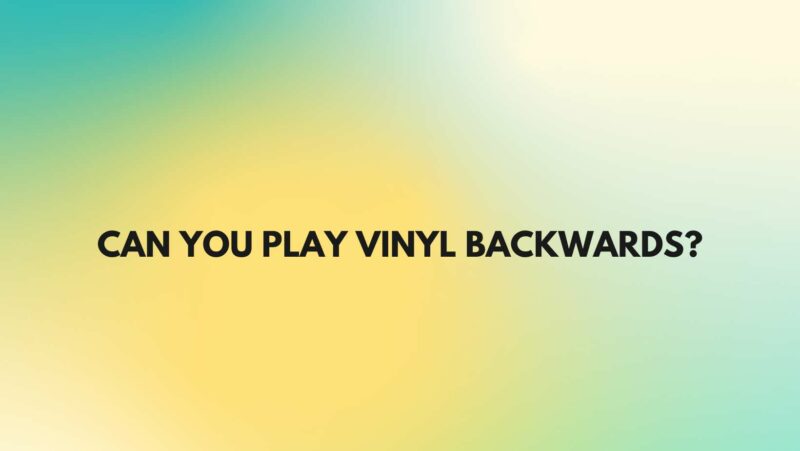Vinyl records have held a special place in the hearts of music enthusiasts for decades, known for their analog warmth and tactile listening experience. Among the curiosities surrounding vinyl records is the notion of playing them backward. This practice has been associated with uncovering hidden messages, artistic experimentation, and even urban legends. In this comprehensive guide, we will explore the possibility of playing vinyl records backward, the methods to achieve it, and its historical and cultural significance.
Section 1: Understanding the Mechanics of Vinyl Playback
Before delving into the idea of playing records backward, it’s essential to comprehend the mechanics of vinyl playback. Vinyl records consist of grooves that encode audio information, and a stylus (needle) traces these grooves, converting the vibrations into audible sound. Typically, during playback, the stylus moves from the outer edge of the record toward the center.
Section 2: Historical and Cultural Context
The practice of playing records backward has roots in history and cultural contexts:
- 1960s Counterculture: The 1960s counterculture movement brought about increased experimentation with music and unconventional listening experiences. Bands like The Beatles and The Rolling Stones began to experiment with reversed recordings as a creative tool.
- Backmasking Controversy: The most famous association with playing records backward is the controversy surrounding “backmasking.” This involved claims that hidden messages could be found when certain songs were played in reverse. Allegations ranged from satanic messages in rock music to political conspiracies.
Section 3: Methods of Playing Vinyl Records Backwards
Playing a vinyl record backward can be achieved through various methods:
- Manual Rotation: This method involves manually rotating the turntable platter in the reverse direction while the stylus is positioned on the record. This allows for control over the playback speed and direction.
- Modified Turntables: Enthusiasts have modified turntables to include a reverse playback feature. These modified turntables allow for seamless reversal of the playback direction at the push of a button.
- Digital Software and Effects: Digital audio software and effects can be used to reverse the audio signal of a vinyl record during playback. This method involves digitizing the analog audio and applying a reverse effect.
- Reel-to-Reel Tape Recorders: Some audio engineers have used reel-to-reel tape recorders to play vinyl records backward by manually reversing the tape direction.
Section 4: Effects of Playing Vinyl Records Backwards
Playing a vinyl record backward can have several effects:
- Reverse Audio Playback: The audio on the record plays in reverse, effectively reversing the order of the sounds.
- Pitch and Speed Variations: Playback speed and pitch may fluctuate during reverse playback due to the turntable’s mechanics not being optimized for reverse playback.
- Sound Quality: The quality of playback may differ from standard forward playback, potentially leading to changes in sound quality.
Section 5: Urban Legends and Hidden Messages
The fascination with playing records backward has led to numerous urban legends and conspiracy theories about hidden messages. While some artists did experiment with backward sounds for creative effect, many of the claims about subliminal messages remain unsubstantiated.
Section 6: Conclusion
Playing a vinyl record backward is an intriguing exploration of sound, music, and creativity. It offers a unique and often unconventional listening experience. However, it’s important to approach this practice with an understanding of its historical context and potential effects on the audio quality of your records. Whether you’re interested in artistic experimentation or simply curious about the mysteries of vinyl, the possibility of playing records backward adds to the allure and mystique of this timeless format.


